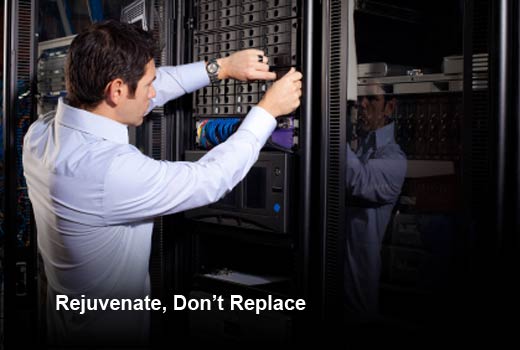Don’t believe all the industry chatter you may be hearing. The mainframe remains deeply embedded in large organizations, setting the standard for reliability, security and availability for mission-critical data and transactions. For example, the new IBM z13 mainframe can handle the load of 100 Cyber Mondays every day, 365 days a year. Currently, mainframes process […]
Don’t believe all the industry chatter you may be hearing. The mainframe remains deeply embedded in large organizations, setting the standard for reliability, security and availability for mission-critical data and transactions. For example, the new IBM z13 mainframe can handle the load of 100 Cyber Mondays every day, 365 days a year. Currently, mainframes process 30 billion business transactions per day, and enable six trillion dollars in credit card payments annually. A whopping 80 percent of the world’s corporate data also originates on the mainframe.
For certain applications, the mainframe is simply irreplaceable, and in fact, we may be at the beginning of a mainframe upswing. IBM’s most recent earnings showed a healthy revenue growth for zSeries systems, built to support the explosion in mobile applications. Recent studies have also shown that in many instances, mainframes are more cost-effective and generate more revenue per infrastructure dollar than commodity servers. In fact, it’s the latter that is plagued by low utilization rates and higher TCO, including management, security, rack space, cooling and electricity fees.
So it’s no surprise that 88 percent of CIOs believe the mainframe will continue to be a key business asset in the next decade, with 81 percent reporting that their mainframes continue to evolve — running more new and different workloads than five years ago. In this slideshow, Compuware has identified five ways forward-thinking organizations are tapping the mainframe’s power.

Tapping the Power of the Mainframe
Click through for five ways forward-thinking organizations are tapping into the power of the mainframe, as identified by Compuware.

Rejuvenate, Don’t Replace
Instead of replacing mainframe systems – a task that IT teams often find too costly, too time-consuming and too difficult – modernize them by leveraging modern tools and processes that make it easier to enable cooperation and integration between “systems of record” and “systems of engagement” for initiatives like data analytics and mobility.

Bring Mainframes into the DevOps Fold
Empower mainframe-inexperienced developers and QA professionals to better understand and troubleshoot mainframe problems and to better collaborate with operations to fix them. Ultimately, this enables organizations to roll out innovative, high-quality mobile apps (which often must pass through mainframe data and systems) much faster.

Insist that Your Mainframe Be Agile
In spite of its strengths, the mainframe has not always been the most agile platform. Mainframe development cycles – typically 12 to 18 months – must shrink to meet the needs of the mobile digital economy and its rapid development needs. To this end, mainframe ISVs are committing to agile software delivery — and committing to more frequent release cycles so that IT organizations can take advantage of much needed tools to help them deliver faster to the business.

Tame Mainframe Licensing Costs (MLC)
Industry data shows that mainframe software licensing costs comprise up to 30 percent of total mainframe TCO. You can keep mainframe licensing costs in check by shifting where and when workloads run to minimize collective MSU peaks and tuning applications to reduce their individual MSU utilization.

Arm the Next Generation with the Best Tools
In the next three to four years, an estimated 80 percent of the people that administer and develop mainframe software will be retiring. Work with software vendors that are committed to providing tooling that will help bring the next generation of developers up to speed quickly. These engineers will need help understanding application logic, data and flow and will want to work in a familiar development environment.












